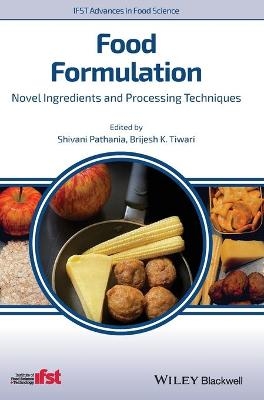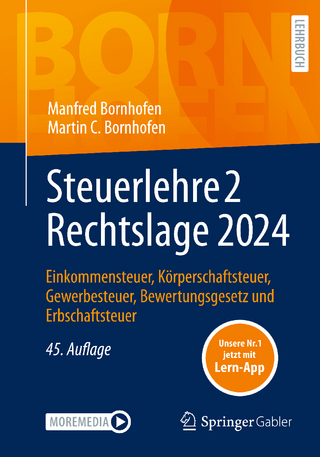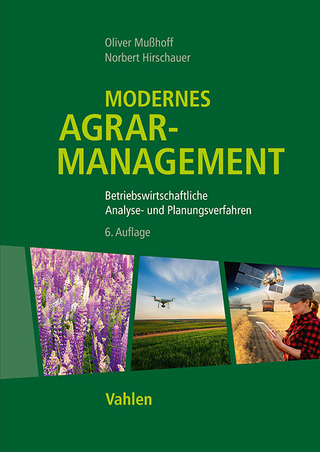
Food Formulation
Wiley-Blackwell (Verlag)
978-1-119-61474-6 (ISBN)
Food Formulation: Novel Ingredients and Processing Techniques is a comprehensive and up-to-date account of novel food ingredients and new processing techniques used in advanced commercial food formulations. This unique volume will help students and industry professionals alike in understanding the current trends, emerging technologies, and their impact on the food formulation techniques. Contributions from leading academic and industrial experts provide readers with informed and relevant insights on using the latest technologies and production processes for new product development and reformulations.
The text first describes the basis of a food formulation, including smart protein and starch ingredients, healthy ingredients such as salt and sugar replacers, and interactions within the food components. Emphasizing operational principles, the book reviews state-of-the-art 3D printing technology, encapsulation and a range of emerging technologies including high pressure, pulsed electric field, ultrasound and supercritical fluid extraction. The final chapters discuss recent developments and trends in food formulation, from foods that target allergies and intolerance, to prebiotic and probiotic food formulation designed to improve gut health. A much-needed reference on novel sourcing of food ingredients, processing technologies, and application, this book:
- Explores new food ingredients as well as impact of processing on ingredient interactions
- Describes new techniques that improve the flavor and acceptability of functional food ingredients
- Reviews mathematical tools used for recipe formulation, process control and consumer studies
- Includes regulations and legislations around tailor-made food products
Food Formulation: Novel Ingredients and Processing Techniques is an invaluable resource for students, educators, researchers, food technologists, and professionals, engineers and scientists across the food industry.
Dr Shivani Pathania is a Research Officer based in Teagasc Food Research Centre, Ashtown, Ireland. Her research interests include food packaging, food formulation, novel food processing technologies and ingredient interactions. She supports food companies on development of pilot scale processes for new formulations. She has worked with more than 25 food companies, authored 15 peer-reviewed research publication and 6 book chapters.
Brijesh Tiwari is a Principal Research Officer at Teagasc Food Research Centre, Ashtown and adjunct Professor at University College Dublin, Ireland. His research interests include advanced food processing and extraction technologies. He is the author of more than 200 peer-reviewed research publications and 110 book chapters, co-editor of 14 books, and series editor of the IFST Advances in Food Science book series. He currently serves as the Editor-in-Chief of the Journal of Food Processing and Preservation.
Chapter 1: Food formulation and product development
1.1 Introduction
1.2 New product development
1.3 Challenges in food formulations
1.4 Relevance of the book and objectives
1.5 Conclusions
Chapter 2: Smart functional ingredients
2.1 Introduction
2.2 Smart protein ingredients
2.2.1 Novel sources of proteins of plant origin
2.2.1.1 Alternative plants as novel sources of protein
2.2.2 Aquatic photosynthetic organisms as novel sources of protein
2.2.3 By-products of plant origin as renewable protein sources
2.2.4 Novel sources of protein of animal origin
2.2.5. Novel sources of proteins of microbiological origin
2.3 Smart carbohydrate ingredients
2.3.1 Alternative plants as novel sources of polysaccharides
2.3.2 By-products as renewable polysaccharide source
2.3.3 Edible mushrooms as source of polysaccharides
2.4 Conclusion and future considerations
2.5 References
Chapter 3: Healthy Ingredients
3.1 Introduction
3.2 Need for healthy ingredients
3.3 Salt replacers
3.4 Sugar replacers
3.5 Phosphate replacers
3.6 Bioactives
3.7 Peptides
3.8 Conclusions and future trends
3.9 References
Chapter 4: Macromolecules Interactions in food formulations
4.1 Introduction
4.2 Role of macromolecular interactions
4.3 Types of macromolecular interactions
4.3.1 Protein-protein interactions
4.3.2 Protein-polysaccharide interactions
4.3.3 Protein-lipid interactions
4.3.4 Protein-Water Interactions
4.3.5 Polysaccharide-lipid interactions
4.3.6 Polysaccharide-protein-lipid interactions
4.4 Role of macromolecular interactions in various food products
4.4.1 Cereal products
4.4.2 Meat products
4.4.3 Dairy products
4.5 Conclusions
4.6 References
Chapter 5: Effect of ingredient interactions on techno-functional properties
5.1 Introduction
5.2 Effect of food formulation on structural properties
5.2.1 Effect on microstructure
5.2.2 Effect on particle size distribution
5.2.3 Effect on textural attributes
5.3 Effect of food formulation on functional properties
5.3.1 Emulsification Behaviour
5.3.2 Water absorption behaviour
5.3.3 Solubility
5.3.4 Water holding capacity
5.3.5 Viscosity
5.3.6 Gelation
5.3.7 Foaming and foam stability
5.4 Effect of food formulation on flavour
5.5 Conclusions
5.6 References
Chapter 6: 3D printing
6.1 Introduction
6.2 A brief history of 3D food printing
6.3 Principle and application
6.4 3D printed food products
6.4.1 Fruits, vegetables, and legumes
6.4.2 Cereals and grains
6.4.3 Meat, fish and seafood products
6.4.4 Dairy products and derivatives
6.4.5 Confectionery and desserts
6.4.6 Alternative ingredients and end-products
6.5 Scalability and future outlook
6.6 Conclusions
6.7 References
Chapter 7: Encapsulation technologies applied to food processing
7.1 Introduction
7.2 Encapsulation techniques
7.2.1 Coacervation
7.2.2 Co-crystallization
7.2.3 Spray-drying
7.2.4 Spray freeze drying
7.2.5 Emulsions
7.2.6 Liposomes
7.2.7 Niosomes
7.2.8 Inclusion complexation
7.3. Applications in the food industry
7.3.1 Aromatic and volatile compounds
7.3.2 Vitamins
7.3.3 Polyphenols
7.3.4 Peptides, proteins, hydrolysates
7.3.5 Enzymes
7.3.6 Lipids
7.4 Factors affecting releasing kinetics
7.5 Conclusions
7.6 References
Chapter 8: Extrusion technology for food formulations
8.1 Introduction
8.2 History and state of the art
8.3 Application of extrusion technology
8.4 Recent advances in extrusion process
8.5 Effect of processing conditions on food formulation
8.6 Conclusions
8.7 References
Chapter 9: Thermal processing technologies
9.1 Introduction
9.2. Conventional thermal processing technologies
9.2.1 Effect of thermal treatments on polyphenols
9.2.1.1 Blanching
9.2.1.2 Pasteurization and sterilization
9.2.2 Effect of thermal treatments on carotenoids
9.2.3 Effect of thermal treatments on vitamins
9.3. Novel thermal technologies
9.3.1 Ohmic heating
9.3.2 Microwave processing
9.4 Conclusions
9.5 References
Chapter 10: Non-thermal processing Technologies
10.1 Introduction
10.2 Non-thermal technologies
10.2.1 High pressure processing
Principles of high pressure processingn
High pressure equipment
Effect of high pressure on different food components
Effect of high pressure treatment on proteins.
Effect of high pressure treatment on lipids
10.2.2 Pulsed Electric Field
10.3.3 Ultrasound technologies
10.4 Conclusions and future studies
10.5 References
Chapter 11: Formulation for food intolerance
11.1 Introduction
11.2 Celiac disease
11.3 Celiac disease food formulations, technology and quality
11.4 Lactose intolerance
11.5 Lactose-free food formulations, technology and quality
11.6 Formulations for other food intolerances
11.7 Conclusions
11.8 References
Chapter 12: Prebiotic and probiotic food formulations
12.1 Introduction
12.2 Need for probiotics and prebiotics
12.3 Probiotic food formulations
12.3.1 Dairy-based probiotic foods
12.3.2 Non-dairy based probiotic products
12.4. Prebiotic food formulations
12.5. Functional properties
12.6 Health effects
12.6.1 Reduced risk of lactose intolerance
12.6.2 Antimicrobial properties
12.6.3 Anticarcinogenic properties
12.6.4 Immunomodulatory activities
12.6.5 Prevention of cardiovascular disease
12.6.6 Urogenital tract Infection (UTI)
12.6.7 Enhancement of short-chain fatty acids (SCFA) production
12.6.8 Anti-diabetic activities
12.7 Conclusion
12.8 References
Chapter 13: Mathematical tools for food formulation
13.1 Introduction
13.2. Food formulation experimental design
13.2.1 Factorial designs
13.2.2 Mixture designs
13.3 Consumer-based food formulation
13.3.1 Preference mapping
13.3.2 Multinomial regression
13.4 Nutrikinetics and Nutridynamic characteristics of food formulations
13.4.1 Quantitative Structure-Activity Relationship (QSAR) modelling
13.4.2 Population-based non-linear mixed effect modelling
13.5 Conclusion
13.6 References
Chapter 14: Regulatory and Legislative Framework for Novel Foods
14.1 Introduction
14.2 What is a Novel Food?
14.3 Overview of Regulatory Frameworks for Novel Foods
14.4 Specific Regulatory Issues
14.5 Other Legal Issues
14.6 Conclusions
| Erscheinungsdatum | 06.04.2021 |
|---|---|
| Reihe/Serie | IFST Advances in Food Science |
| Verlagsort | Hoboken |
| Sprache | englisch |
| Maße | 170 x 244 mm |
| Gewicht | 726 g |
| Einbandart | gebunden |
| Themenwelt | Wirtschaft ► Betriebswirtschaft / Management |
| ISBN-10 | 1-119-61474-0 / 1119614740 |
| ISBN-13 | 978-1-119-61474-6 / 9781119614746 |
| Zustand | Neuware |
| Informationen gemäß Produktsicherheitsverordnung (GPSR) | |
| Haben Sie eine Frage zum Produkt? |
aus dem Bereich


